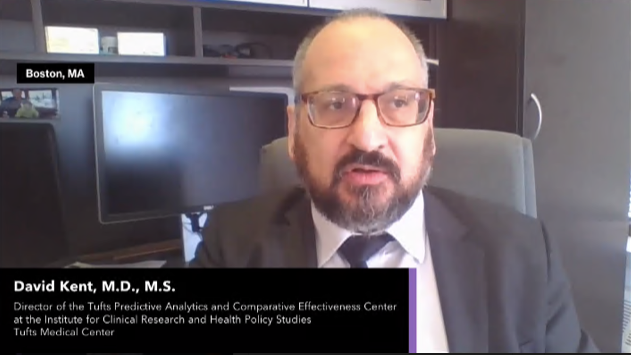
Event Highlights
The Future of Health Care: Caring for the Polychronic Populations
By Mark Miller, Bloomberg Live
At this Bloomberg Live virtual briefing, we examined the issue of people living with polychromic conditions. Polychronic patients are those with three or more chronic diseases. By some estimates, this population of patients will triple in the coming years, from 30.8 million patients in 2015 to 83.4 million patients in 2030. So, it’s a very important issue for patients, doctors and health care systems to understand and to treat. We’ve been reminded of just how important this issue is during the current Covid-19 pandemic as people with underlying medical issues are particularly vulnerable. Treating this population adds complexity to an already fragmented healthcare system. Polychronic patients tend to have longer hospital stays and higher readmission rates, often resulting in lower patient satisfaction. We explored the demographics of this group and innovative ways to reduce data fragmentation and provide a holistic care approach while containing costs.
Speakers included:
- Omar Baker, M.D., F.A.A.P., Executive Vice President, Strategic Initiatives & Innovation, and Chief Medical Officer, Health Services, OptumHealth
- Arlene S. Bierman, M.D., M.S., Director, Center for Evidence and Practice Improvement, Agency for Healthcare Research and Quality
- Cynthia Boyd, M.D., Professor of Medicine and Interim Director, Division of Geriatric Medicine and Gerontology, Johns Hopkins University School of Medicine
- David Kent, M.D., M.S., Director of the Tufts Predictive Analytics and Comparative Effectiveness Center at the Institute for Clinical Research and Health Policy Studies, Tufts Medical Center
- Rozalina McCoy, M.D., M.S., Associate Professor of Medicine, Division of Community Internal Medicine, Mayo Clinic Robert D. and Patricia E. Kern Center for the Science of Health Care Delivery
- Michael Steinman, M.D., Professor of Medicine, University of California, San Francisco, and San Francisco VA Medical Center
Moderators included:
- Michelle Fay Cortez, Medical Science and Tech Reporter, Bloomberg
- Drew Armstrong, Senior Editor, U.S. Health Care, Bloomberg
Click here to view video of the full discussion.
Here are a few highlights from the discussions:
The prevalence of polychronic conditions does increase as some patients age but polychronic issues are seen in all age groups, including children, according to Cynthia Boyd, M.D., Professor of Medicine and Interim Director, Division of Geriatric Medicine and Gerontology, Johns Hopkins University School of Medicine. She said 1 in 15 children in the U.S. have polychronic conditions. Among older adults, two-thirds to three-fourths are living with multiple chronic conditions.
The U.S. healthcare system is “built to treat diseases and we need to transform to one that takes care of the people living with those diseases and design plans of care they can follow and that can optimize their health”, said Arlene S. Bierman, M.D., M.S., Director, Center for Evidence and Practice Improvement, Agency for Healthcare Research and Quality, which is part of the U.S. Department of Health and Human Services. “We have an epidemic in this country. The prevalence of multiple chronic conditions is growing because many of the risk factors are the same. We really have to highlight preventing multiple chronic conditions as well as managing them better.” She added that the heightened risk of contracting Covid-19 among this population makes it urgent to address how to better manage the care of patients with multiple chronic conditions.

In the Covid-19 pandemic, telehealth options have been scaled rapidly. “Everyone is trying this out and fumbling their way through it,” said Michael Steinman, M.D., Professor of Medicine, University of California, San Francisco and San Francisco, VA Medical Center. But, he added, while helpful, remote electronic visits are not always an ideal substitute for treating patients with multiple chronic conditions.
The Mayo Clinic in Rochester, Minnesota, has developed several new, innovative ways to reach populations that have been affected at greater rates by Covid-19, which includes people with polychronic conditions, said Rozalina McCoy, M.D., M.S., Associate Professor of Medicine, Division of Community Internal Medicine, Mayo Clinic Robert D. and Patricia E. Kern Center for the Science of Health Care Delivery. For example, Mayo set up “connectivity within every single nursing home in the southeast Minnesota region so that our physicians sitting in Rochester would be able to remote into any of the nursing homes,” she said. Each nursing home has an iPad equipped with cellular service (which is very important for nursing homes in remote areas with limited broadband access) that allows the physician to hear the individual’s lungs and heart, to speak to the patient to figure out what’s wrong.”
The rapid adoption over the last few years of the utilization of electronic medical records — some 96 percent of all acute hospitals now have digitized their medical records— is an important step in creating a system that will allow researchers to analyze far greater amounts of data to help devise better and more cost-effective treatments for polychronic populations, among others, said David Kent, M.D., M.S., Director of the Tufts Predictive Analytics and Comparative Effectiveness Center at the Institute for Clinical Research and Health Policy Studies, Tufts Medical Center. “We have to connect data from many, many different sources: medical records data with billing data and connecting that with pharmacy data and lab data and then connecting one hospital to another and connecting patients longitudinally from their outpatient clinic to their inpatient clinic.”

The goal: “An environment for a learning healthcare system [that will allow researchers to] glean useful scientific insights which can then be fed back through the same system to actually influence care and decision-making. That is really largely in place now. We haven’t quite yet seen the revolution in care and decision-making that that promises, but I think over the coming decade that’s when we’ll start to see some big changes,” Dr. Kent said.
At OptumHealth, which sponsored this virtual briefing, according to Omar Baker, M.D., F.A.A.P.,Executive Vice President, Strategic Initiatives & Innovation, and Chief Medical Officer, Health Services, OptumHealth, executives have successfully employed technology in the midst of the pandemic to optimize key parts of the business. The key is to “harness the data so we can scale decisions across the country, across hotspots, and apply those lessons learned. Some examples were around PPE,” he said. “We needed to give our front lines the physical armor they needed so we created algorithms that would appropriately and effectively predict burn rates, which informed where we needed to shift PPE because we could not have any disruptions in our clinical operations across the country.”
While technology has allowed researchers and clinicians to make rapid advances in understanding and treating Covid-19, Dr. Kent cautioned that speed can lead to errors. “We’ve seen some of the limits about how fast we could make data available,” he said. “We’ve had some very high-profile retractions of scientific information. This is the type of environment where you can anticipate, because of the speed of research, more errors, more mistakes than we would have under more normal circumstances.”
——————————
Join the Conversation: #TheFutureOf
Instagram: @BloombergLive
LinkedIn: Bloomberg Live
Twitter: @BloombergLive
Interested in more Bloomberg Live virtual events? Sign up here to get alerts.
——————————
